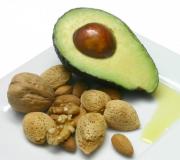Where to find platinum. How to test platinum at home
Platinum is a precious metal that is used to make jewelry. It became known in the 18th century, but platinum has received a wide range of applications only now. Platinum is now used to make small-sized jewelry such as rings, earrings and chains. Only small jewelry is popular because of their high final cost, which not everyone can afford. In the era of the Internet, it is very easy to buy jewelry, but there is one drawback - until the moment you receive the item, you cannot see and evaluate it, that is, you can easily buy a fake on the Internet. You can play it safe from this by buying a platinum product in a special store, but even here you cannot be completely sure of the honesty of the sellers. The question arises - how to determine platinum, or rather its authenticity, and even at home?
Determine the weight and density of the decoration
Platinum is quite heavy and can only be compared with the metals of its group: iridium, osmium, uranium and rhenium. All other metals are much lighter. On top of that, in the production of jewelry, the weight of platinum will be from 85% to 95% of the total mass. In other words, platinum jewelry is almost entirely made from the base metal. And so how to distinguish platinum from possibly similar other metals is a very important question.

For example, gold and silver items have less precious metal in their mass, which affects its cost and overall value. In such a mixture, it is not advisable to use iridium, osmium or rhenium for weighting, since, in addition to the same price as platinum, they are also rare in the natural environment. In order to understand whether the jewelry is made from real raw materials, it is necessary to select a sample that needs to be checked and compare it with a similar size. Such a ring will be much heavier than the opponent, but if the products are the size of a grape, then you will have to use accurate scales to determine the platinum.
If there is a measuring cup or other vessel for measuring volume, then it can be used to measure the density of the jewelry. To do this, we weigh the product and lower it into a vessel with water, after which we look at the volume of squeezed out water in cubic centimeters (it should be about 21.45).
IF THERE IS APPROXIMATELY 21.45 CUBE CENTIMETERS OF WATER, THEN YOU CAN TALK ABOUT THE AUTHENTICITY OF THE JEWELRY.
Chemistry will help
Science can teach you how to determine platinum at home, there are many videos in which experienced jewelers teach this verification method. For example, you can use the tool that is in every first aid kit - iodine. Its drop on a product made from original raw materials should be dark, this will be an indicator of authenticity. The darker the iodine, the higher the metal sample, and after wiping, the product should not leave streaks.
Ammonia will also be a good tool for checking the precious metal. If platinum is exposed to it, then it will not react in any way to its effect, all other metals will turn black and this will be a good method to check the authenticity of the jewelry.

Unlikely, you may have both nitric and hydrochloric acid at your disposal at the same time. These chemical liquids must be mixed in a ratio of 1 to 3 to get the so-called "royal vodka". When heated, the mixture will gradually dissolve the platinum; when cold, nothing should happen.
We distinguish from silver
Silver has a much lower price than platinum, which is why unscrupulous manufacturers often pass silver off as a more expensive metal. To distinguish silver, look at the color of the item. The counterfeit metal is lighter in color, while silver has a somewhat gray tint. Also remember that large jewelry is not made from platinum due to the high cost, so if you are offered a large chain for a small price, then with a high degree of probability this is a scam.
 From left to right: silver, platinum and white gold.
From left to right: silver, platinum and white gold. You can check platinum at home “by the tooth”, platinum will endure biting, and silver will receive a small mark from the tooth. Platinum is harder and therefore resistant to physical impact. At home, you can also take a rotten egg, on which you can put both decorations. Silver will blacken due to hydrogen sulfide, while platinum will retain its fresh look as before, which will help determine the authenticity of the product.
We heat up
Platinum is very refractory, so it cannot be melted with a lighter flame. Also, it will not succumb to a gas stove and even a burner. This material does not change color when heated, since it is impossible to quickly change its temperature. That is why, with a brief heating of the platinum ring, you can safely put it on your finger, because the jewelry will not have time to warm up inside. But on the basis of this experiment, it is impossible to draw unambiguous conclusions, which means that you must either use other methods of verification or contact a specialist who knows exactly how to verify the authenticity of the product from the platinum you bought.

It is a specialist who can help if you do not know how to check platinum. And it is only then that you can be completely sure that you are wearing a real noble metal.
Platinum is a beautiful light-colored metal that is used in jewelry making. This is an expensive metal, and therefore small jewelry is made from it. In order not to fall for the tricks of scammers and not throw money away in vain, you need to correctly evaluate the purchase and know how to determine platinum at home.
There are a dozen methods by which you can determine the authenticity of platinum at home. This does not require complex manipulations. We will use simple substances that are in the house, for example, iodine, ammonia or concentrated salt solution. But not everyone knows how to check platinum.
First, the weight and density of the object is estimated. Products made of platinum are heavy, because of the metals of its group, this one is heavier than the others. If silver items of the same size are available, simply compare them by weight. Platinum should be twice as heavy. As for density, you will need a measuring cup for this. It is necessary to pour water and throw jewelry there. Then measure the volume of water displaced by the metal. This value should be around 21.45.
You can also simply take the sample in your hands and heat it up. The original will remain cold, since platinum has poor thermal conductivity.
Alcohol tincture of iodine
An effective method for determining the authenticity of platinum is the use of ordinary iodine. If you drop on the product, the drop will be dark. Moreover, the darker the iodine on the sample, the higher the metal sample in the jewelry. When wiping iodine from a metal object, in the case of a true jewel, there will be no streaks left.
Aqua regia
Royal vodka is a mixture of two acids: 1 part nitric and 3 parts hydrochloric. Such a solution helps to isolate platinum from several options. When cold, aqua regia does not affect this precious metal in any way. Even a high-quality fake will immediately begin to dissolve in this liquid. To dissolve platinum, aqua regia is heated. This is a rather radical method of verification; it is suitable if it is not the decoration that is being tested, but the sample.
Magnet
Platinum, like any precious metal, does not have the ability to be magnetized. If the magnet attracts jewelry to itself, then there is no precious metal in it, or the percentage is minimal.
Concentrated salt solution
Everyone has simple salt in the house, and therefore it is not difficult to make a concentrate out of it. This method of home examination is the easiest and most accessible. To do this, you need a tin can and a working battery. Salt must be diluted in a tin so that the solution is sufficiently concentrated. The product is lowered into the solution. The battery is connected so that the plus is attached to the metal, and the minus to the tin. If the platinum is genuine, then chlorine will begin to be released from the solution, which will immediately become clear by the specific smell. In the case of a fake, a precipitate forms in the solution, and it becomes cloudy. With a real precious metal, transparency will not disappear anywhere.
Liquid ammonia
Another chemical method for determining authenticity. Liquid ammonia will darken any other metal, and will not interact with platinum. This will be proof of the nobility of the product.
Alternatively, you can try using a metal sample as a solder. If it is evenly distributed over the tip of the soldering iron, then it is not a fake. When interacting with a glass blowing burner, a real jewel will not melt, but will become white-hot.
Not everyone can afford such experimental verification methods. Therefore, if in doubt, it is better to contact a specialist who, without damaging the jewelry, can determine the authenticity of the precious metal.
One of the most noble metals can be confused with ordinary stainless steel.
So, how do you still distinguish platinum from steel. In the photo - wedding rings made of steel (left) and platinum (right). The cost of a pair of steel wedding rings will be about 500 rubles(no more than 200 hryvnia). While the cost of a pair of platinum wedding rings will range from 25 to 40 thousand rubles or from 10,000 to 20,000 hryvnia.

As you can see in the photo, it is not possible to distinguish platinum from steel by color.
Let's compare platinum and steel in terms of the following indicators: density , hardness and melting temperature.
Density
The density of platinum is 21,500 kg/m3 or 21.5 g/cm3. Steel density - 7800 kg/m3 or 7.8 g/cm3. That's why platinum will almost 3 times heavier than steel. Those. if you take 2 objects of the same size (in our case, 2 rings) - one of steel, the other of platinum, then the platinum object will be heavier. This is one of the defining factors that distinguishes platinum from stainless steel.
Hardness
Brinell hardness of platinum is 50 kgf/mm2, steel hardness is 123 kgf/mm2. Steel is more than 2 times harder and stronger than platinum. This factor is very important when working with a needle file. To make a file on a steel object, you will have to make more effort. Platinum will "saw" softer. It's a subtle feeling. In addition, sawing steel will make a characteristic sound - a rattle - also a very subtle moment.
Melting temperature
The melting point of platinum is 1768.3 °C, the melting point of steel is 1450-1520 °C. Platinum is more refractory. This information is more for reference. Do not experiment with these temperatures at home.
Platinum mark
All platinum jewelry is subject to branding. The platinum jewelry mark looks like this.

The shape of the stamp is an octahedron. Learn more on platinum assay standards in the Russian Federation , Ukraine and abroad.
Last advice: if you need to determine what metal the item is made of, but there is nothing to compare with, you can take a gold jewelry (visually equal in size). The density of gold is lower than the density of platinum - 19.32 g/cm³. Thus, if this item is made of platinum, then it will be heavier than your gold jewelry.
At first glance, an inexperienced person, platinum and silver are very similar. However, with a little practice, you should be able to tell them apart easily!
Steps
Visual check
- If there are no signs at all on the jewelry, it is probably not made of precious metal.
-
Look for marks indicating that the jewelry is made of silver. Some coins and jewelry are stamped "999". This indicates that the jewelry is made of pure silver. If you find the inscription "925" with the letter "S" before or after the numbers, then the product is made of mint silver. In this case, the jewelry consists of 92.5% silver, the rest is made up of other metal impurities, usually copper.
Look for inscriptions that would indicate that you have platinum in front of you. Platinum is a very rare and expensive metal, so authentic jewelry made from it is labeled accordingly. Look for "Platinum", "PLAT" or "PT" labels that have "950" or "999" in front or behind them. These numbers indicate the purity of platinum, with the number "999" corresponding to the purest metal.
- For example, a genuine piece of platinum jewelry may be marked "PLAT999".
-
Bring a magnet to the decoration. Most precious metals are not ferromagnetic, meaning they are not attracted to a magnet. However, do not panic if the platinum jewelry reacts to the presence of a magnet. Pure platinum is a soft metal, so it is hardened with other additives. Cobalt is often used as a hardening alloying element. Cobalt is a ferromagnetic, so some platinum jewelry may be attracted to a magnet.
Using the Acid Scratch Kit
-
If the jewelry is otherwise difficult to check, use an acid kit. If you have not been able to find any inscriptions on a piece of jewelry and you are in doubt about its origin, use a test kit to determine what it is made of. Purchase a test kit from a jewelry store or order one online. The composition of such a set includes a grinding stone and several vials with different acids.
- Purchase a kit that is suitable for determining silver and platinum. It should include vials of acids to detect these metals.
- If the kit does not include rubber gloves, please purchase them separately. Be careful not to get acid on your skin, otherwise you may get burned.
-
Rub the metal with a grinding stone. Lay the grinding stone supplied with the set on a flat surface. Lightly rub the jewelry from side to side on it to make a line. Apply 2-3 lines to the product (one for each acid). For example, if you want to determine whether a piece of jewelry is made of platinum, silver or gold, you will need three lines.
- Rub an inconspicuous part of the jewelry on the stone. The grinding stone will scratch and damage the surface of the metal.
- Place the sanding stone on a towel to avoid scratching your countertop or other work surface.
-
Drop acids on the lines left by the stone. Take the acid from the test kit and carefully apply a small drop to one of the scratched lines. Do not mix different acids, otherwise the results will be incorrect.
Follow the reaction of the acid. The reaction may occur within a few seconds or approximately one minute. If the scratched line disappears completely, the test has failed. For example, if you drop acid to determine platinum and the line dissolves, the jewelry is not made of platinum. If the line does not disappear, you have pure platinum.
Applying the test solution directly to the silver
- Wear gloves to protect your hands and cover your work surface with a towel.
- Do not apply acid to fasteners and other important parts. Remember that acid can seriously damage small fragments.
Use a silver test solution on large large pieces of jewelry. Do not apply this acid to fragile jewelry. When it hits a metal surface, the acid corrodes it. If you purchased an acid test kit, use the included silver solution. Such a solution can also be purchased at a jewelry store or ordered online.
Check the decoration. Apply a drop of the silver detection solution to the metal. Select an inconspicuous area of the product for this. For example, if you want to test a large cuff bracelet, drop acid on the inside. For a short, flat necklace, put a drop of acid on the back of one of the links.
-
-
Follow the reaction. At first, the acid will be dark brown or transparent, then it will change its color. By changing the color of the solution, one can judge the purity of the metal. For example, if the liquid darkens or turns bright red, the metal contains at least 99% silver.
Remove acid from jewelry. Wipe off the acid with a clean rag and discard it. Rinse the product with cold water to remove acid residue. Use a colander or plug the drain hole to keep the decoration from being washed away with water. Allow the jewelry to air dry completely before wearing it.
Look for any identifying marks on the decoration. Such marks can be etched directly onto the metal. If the jewelry has a clasp, look for the inscription on its reverse side. In addition, there may be a small metal tag with a description on the end of the piece of jewelry. Finally, inspect the largest parts of the decoration.
Testing with hydrogen peroxide
-
Soak your jewelry in hydrogen peroxide. Pour hydrogen peroxide into a glass bowl or glass and dip your jewelry into it. The jewelry should be completely immersed in the liquid. If the hydrogen peroxide does not completely cover it, add a little more.
- Hydrogen peroxide can be bought at the nearest pharmacy.
-
Look at the reaction. Platinum is a strong catalyst for hydrogen peroxide. If the jewelry is indeed made of platinum, the peroxide will gurgle almost immediately. Silver is a less powerful catalyst. If the liquid does not start to bubble gas immediately, wait about one minute to see if smaller gas bubbles form near the metal surface.
- Hydrogen peroxide will not corrode or damage jewelry.
Platinum is the most expensive precious metal that occurs in nature ten times less often than gold, which is why it was nicknamed the "queen of metals". Platinum has a high density, incredible wear resistance and resistance to corrosion. The metal also has a great appearance, so the decorations leave no one indifferent. In addition, platinum products do not break, bend or fade over time. Many people who are interested in jewelry made from this metal are wondering how to determine platinum at home.
Natural Platinum Ingot
A little about metal
Platinum is a metal characterized by a high hardness and density, therefore it is used in the jewelry industry almost in its pure form, while a gold alloy can contain up to 63% alloy. For platinum, the following samples are typical:
- 850: the alloy consists of 85% precious metal and 15% ligature;
- 900: the alloy is 90% precious metal and 10% ligature;
- 950: The alloy is 95% precious metal and 5% ligature.
As a ligature, metals such as rhodium, palladium, iridium and silicon are added to platinum. These metals do not add an uncharacteristic hue to platinum, but only emphasize its white-silver radiance.
Checking platinum jewelry
When answering the question of how to check platinum, it should be said that the check should begin in a jewelry store. The purchase of platinum products must be approached with knowledge of the matter, since such jewelry is expensive, which is what scammers use, seeking to sell gold or silver to the buyer at the price of platinum. Therefore, you need to buy platinum jewelry only in large jewelry stores or salons that offer their products under well-known brands. Genuine platinum jewelry will never be sold "by hand".
Jewelry made of platinum is not massive, primarily because this metal is very rare and expensive. Therefore, if the seller offers the buyer a massive ring (pendant, earrings) made of platinum, then this should alert.
You need to take a platinum jewelry in your hand for a few seconds and try to heat it. If the metal remains cold, then this will be a sign of its authenticity, since platinum is characterized by poor thermal conductivity.

At home, iodine can be used to check the authenticity of platinum. Select a small area on the product to be tested and apply some iodine to it. If a dark spot appears on platinum, then this will indicate the authenticity of the metal. Important: iodine must be wiped off as soon as possible so that there is no dark spot on the decoration!
If you put a little ammonia on real platinum, then this substance will not harm the product. If the jewelry darkens from ammonia, this will indicate that it does not contain platinum. The most radical method of verifying the authenticity of platinum is the use of "aqua regia", consisting of nitric acid (1 part) and hydrochloric acid (3 parts). The object to be tested should be placed in such a solution. "Royal vodka" will not affect natural platinum in any way.
If there is a silver item at home, the size of which is similar to the parameters of the checked platinum jewelry, then you can compare the weight of the two items. Also, for verification, you will need high-precision scales (pharmaceutical). On them you need to weigh the jewelry in turn and compare their masses. Silver will be 2 times lighter than platinum. But if the products weigh the same, then this will indicate that they are both made of silver. In the same way, platinum can be distinguished from white gold, which is very similar to the "queen of metals".
You should also evaluate the appearance of the product. Platinum has a pure white luster, while silver (even high-grade silver) has a grayish tint that is clearly defined when comparing two pieces of jewelry. Unlike silver, platinum does not tarnish or darken over time.
Platinum authentication methods used at home are not 100% reliable. Only an expert can accurately determine the authenticity of the metal.




